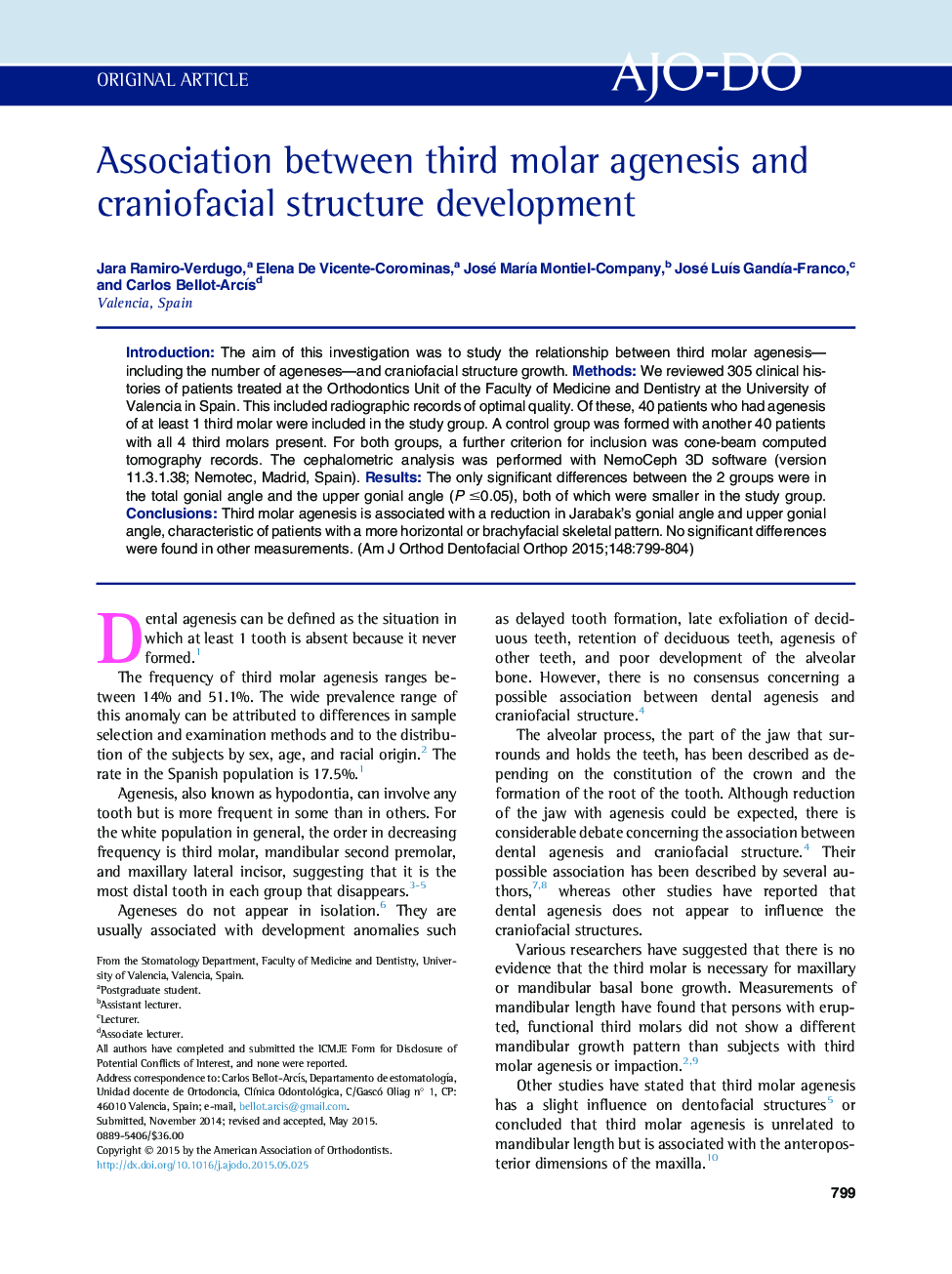| Article ID | Journal | Published Year | Pages | File Type |
|---|---|---|---|---|
| 3115799 | American Journal of Orthodontics and Dentofacial Orthopedics | 2015 | 6 Pages |
•We studied third molar agenesis and development of craniofacial structures.•Total and upper gonial angles differed between the agenesis and control groups.•Third molar agenesis is associated with horizontal or brachyfacial skeletal patterns.
IntroductionThe aim of this investigation was to study the relationship between third molar agenesis—including the number of ageneses—and craniofacial structure growth.MethodsWe reviewed 305 clinical histories of patients treated at the Orthodontics Unit of the Faculty of Medicine and Dentistry at the University of Valencia in Spain. This included radiographic records of optimal quality. Of these, 40 patients who had agenesis of at least 1 third molar were included in the study group. A control group was formed with another 40 patients with all 4 third molars present. For both groups, a further criterion for inclusion was cone-beam computed tomography records. The cephalometric analysis was performed with NemoCeph 3D software (version 11.3.1.38; Nemotec, Madrid, Spain).ResultsThe only significant differences between the 2 groups were in the total gonial angle and the upper gonial angle (P ≤0.05), both of which were smaller in the study group.ConclusionsThird molar agenesis is associated with a reduction in Jarabak’s gonial angle and upper gonial angle, characteristic of patients with a more horizontal or brachyfacial skeletal pattern. No significant differences were found in other measurements.
